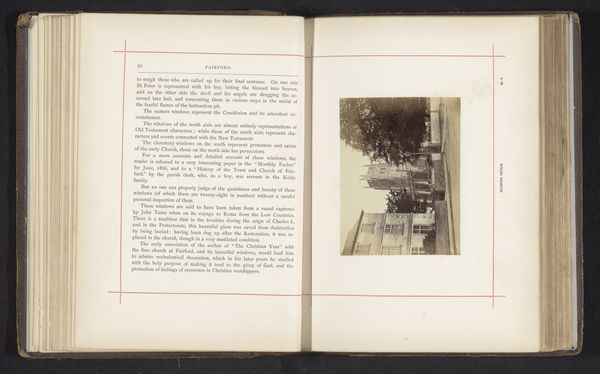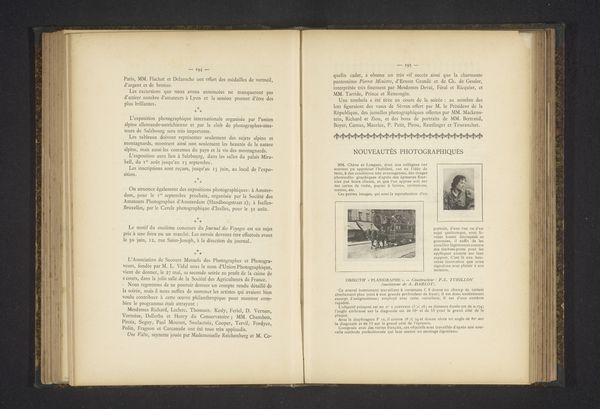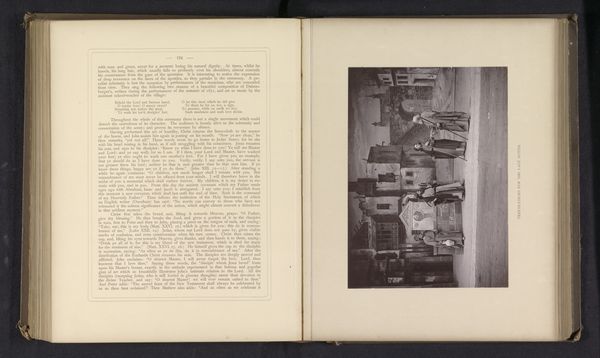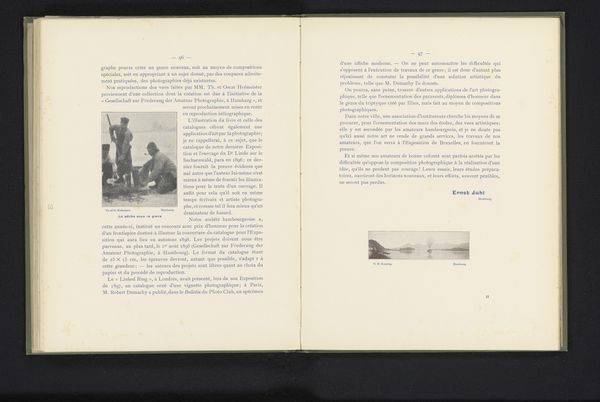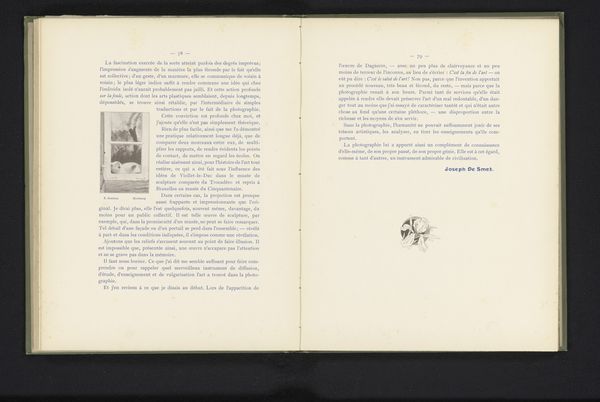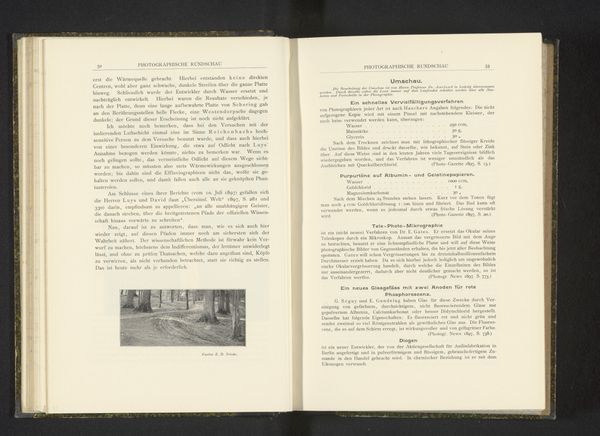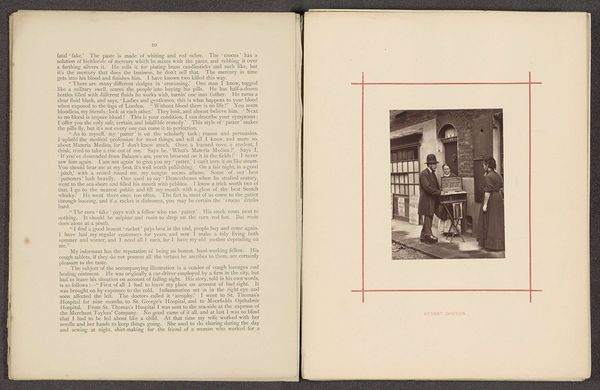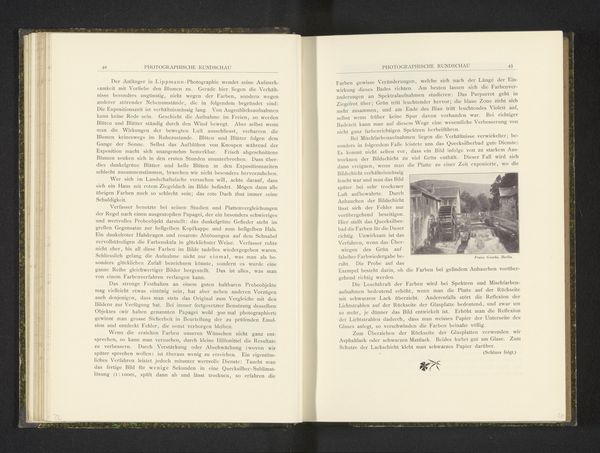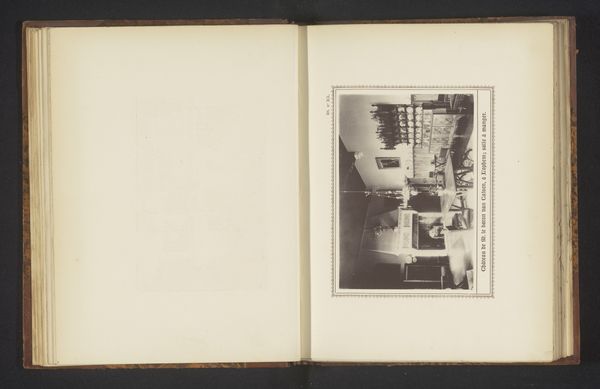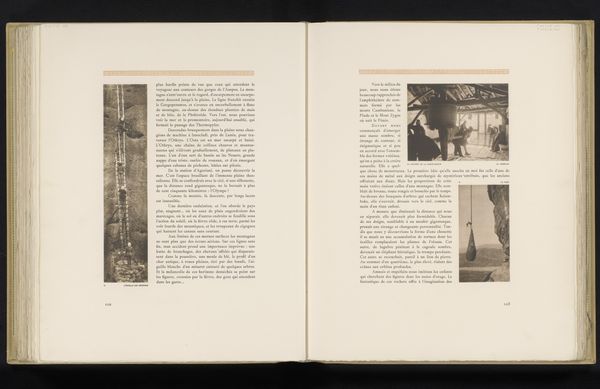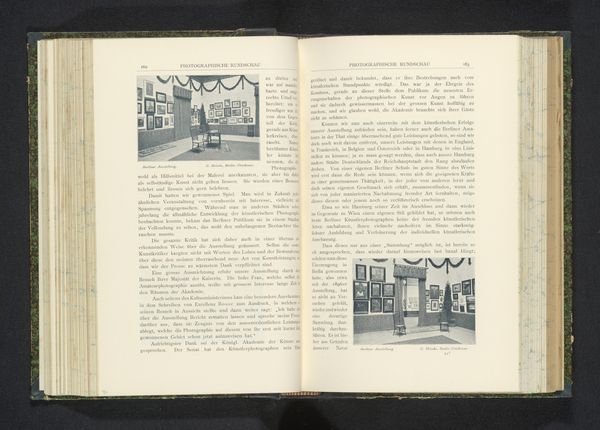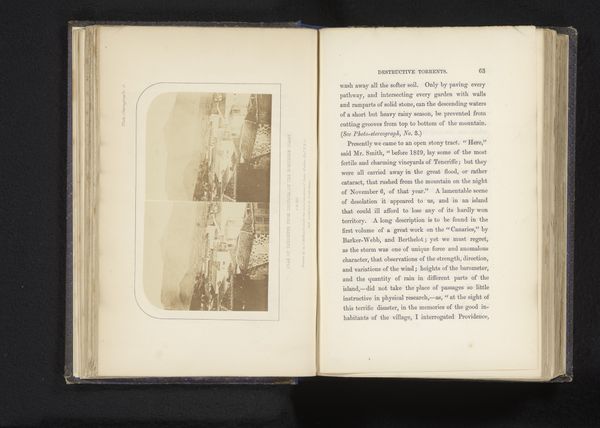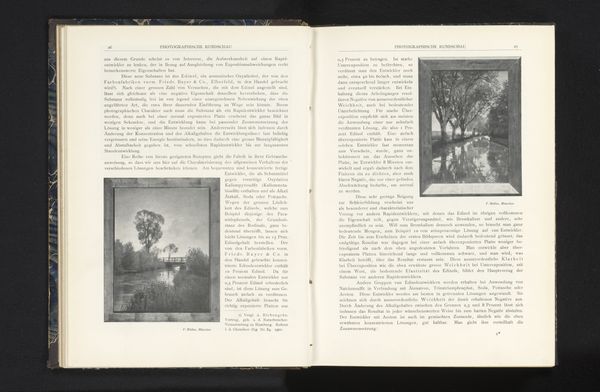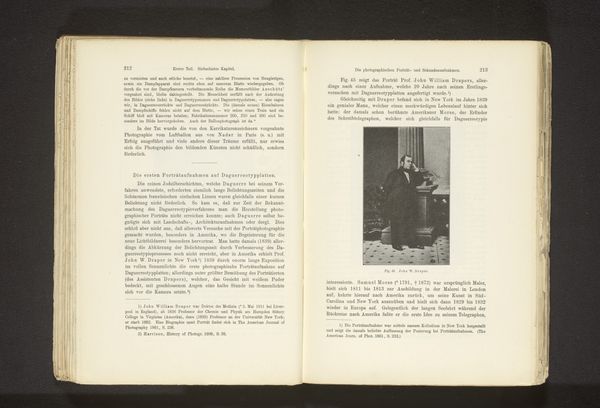
mixed-media, collage, print, textile, photography
#
mixed-media
#
collage
# print
#
textile
#
photography
#
monochrome
Dimensions: height 95 mm, width 61 mm
Copyright: Rijks Museum: Open Domain
Curator: What strikes me immediately about this spread is the muted gray scale; it seems to mute the overall mood. Editor: Indeed. This page comes from a photographic album dating back to before 1898, featuring a mixed-media work titled "Onbekende vrouw zit op het keukenblad" which translates to "Unknown woman sits on the kitchen counter". The artist's profile is attributed to Th. u. O. Hofmeister, employing collage, photography, textiles and prints. Curator: It looks like a rather traditional domestic scene at first glance. The starkness, however, disrupts that expected tranquility. Is the inclusion of photography meant to convey some objective reality, or does it blur the line between objective observation and artistic intention? Editor: It's the layering of different mediums, especially collage and textile elements, that creates a tension. How are gender roles and domestic spaces represented? How does photography challenge, reinforce, or subvert conventions, as well as, power dynamics. Curator: That's what unsettles me. This everyday setting becomes a staged representation. The act of placing this “unknown woman” within an album intended for public viewing shifts the meaning, framing the personal within broader societal values. Is it to capture a time, or merely perform as art? Editor: The materials used speak to its role. What can prints or even the integration of textile evoke here? Could they embody societal pressures? How could that translate as a representation? It forces us to think about access, authorship, and historical storytelling in the image's circulation as well as who the author is. Curator: Yes, those are precisely the sorts of complex themes raised through the deliberate construction of this work. Even if the intent was not purely political, its status in a publicly displayed photograph album inevitably draws political readings. Editor: It makes the seemingly quiet nature of the portrait unsettling because it is not clear whose story the work truly depicts or what kind of statement it aims to convey. Curator: Definitely. These old images contain whole histories that are not always readily apparent to the passive observer. Editor: Agreed, this piece serves as a stark reminder for a renewed approach to interpreting older work. It can make one think beyond a literal translation.
Comments
No comments
Be the first to comment and join the conversation on the ultimate creative platform.
